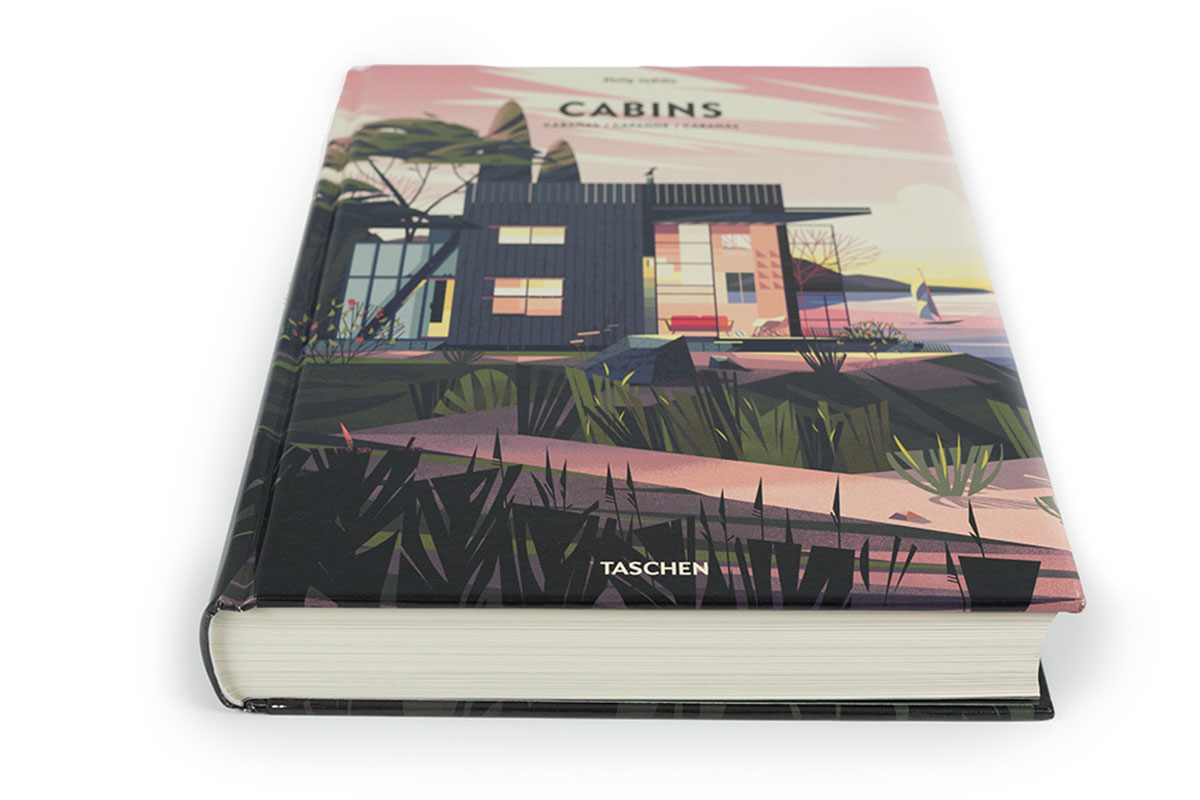CABINS by TASCHEN
2014 TASCHEN
author Philip Jodidio
illustrations Cruschiform

Ever since Henry David Thoreau’s described his two years, two months, and two days of cabin existence at Walden Pond, Massachusetts in Walden, or, Life in the Woods (1854), the idea of a refuge dwelling has seduced the modern psyche. In the past decade, as our material existence and environmental footprint has grown exponentially, architects around the globe have become particularly interested in the possibilities of the minimal, low-impact, and isolated abode.
This new TASCHEN title, combining insightful text, rich photography and bright, contemporary illustrations by Marie-Laure Cruschi, explores how this particular architectural type presents special opportunities for creative thinking. In eschewing excess, the cabin limits actual spatial intrusion to the bare essentials of living requirements, while in responding to its typically rustic setting, it foregrounds eco-friendly solutions. As such, the cabin comes to showcase some of the most inventive and forward-looking practice of contemporary architecture, with Renzo Piano, Terunobu Fujimori, Tom Kundig and many fresh young professionals all embracing such distilled sanctuary spaces.
The cabins selected for this publication emphasize the variety of the genre, both in terms of usage and geography. From an artist studio on the Suffolk coast in England to eco-home huts in the Western Ghats region of India, this survey is as exciting in its international reach as it is in its array of briefs, clients, and situations. Constant throughout, however, is architectural innovation, and an inspiring sense of contemplation and coexistence as people return to nature and to a less destructive model of being in the world.
CABINS by TASCHEN via TASCHEN
DROP eco-hotel by In-Tenta design
Made with wood, steel, and polycarbonate, the DROP Eco-Hotel was designed as a removable modular hotel room. The designers explain: “The idea is that this unit can be placed in a beautiful spot, but then easily removed without any ecological damage as a result of its presence. Its design draws inspiration from organic shapes found in nature.” The lightweight units are made with modular prefabricated wooden and steel elements in a factory and can be transported to their final location by truck. They are put in place on adjustable steel legs. Large operable bubble windows at the ends of the cylindrical tube forms allow users to fully appreciate their setting. A skylight runs the entire length of the pod, which can accommodate two adults. Photovoltaic panels on the roof and a rainwater collection system for use in the bathroom reduce environmental impact.

